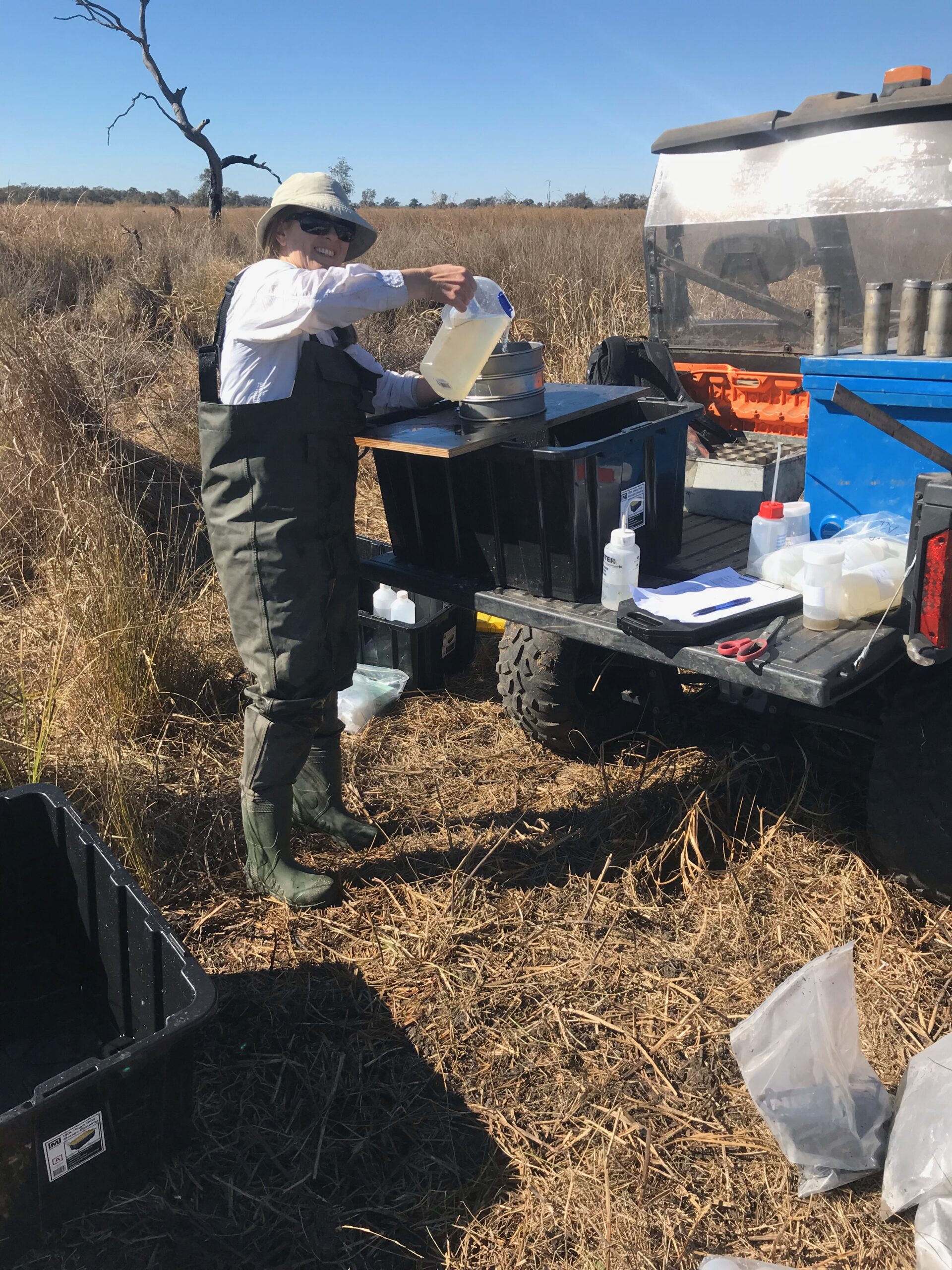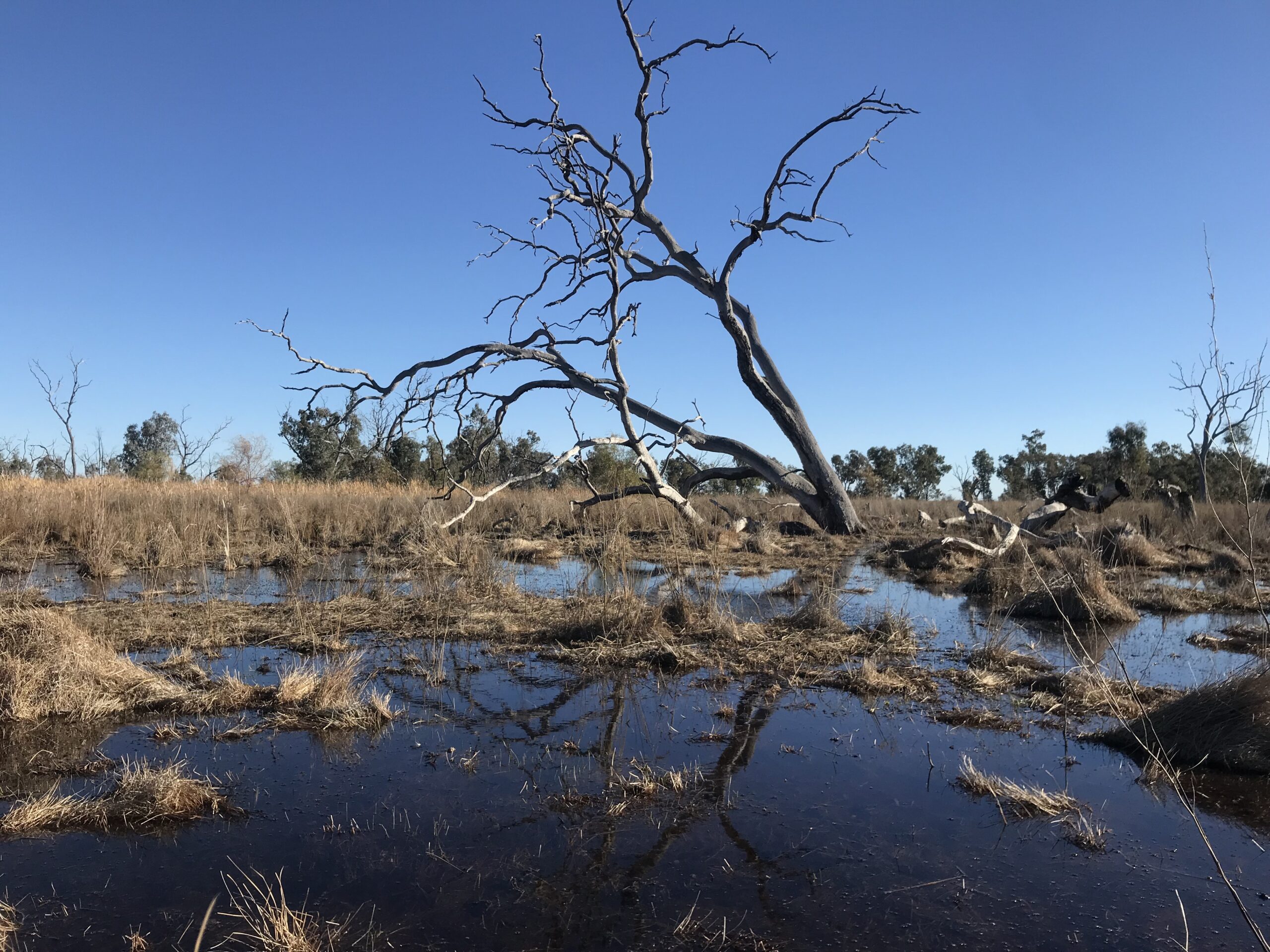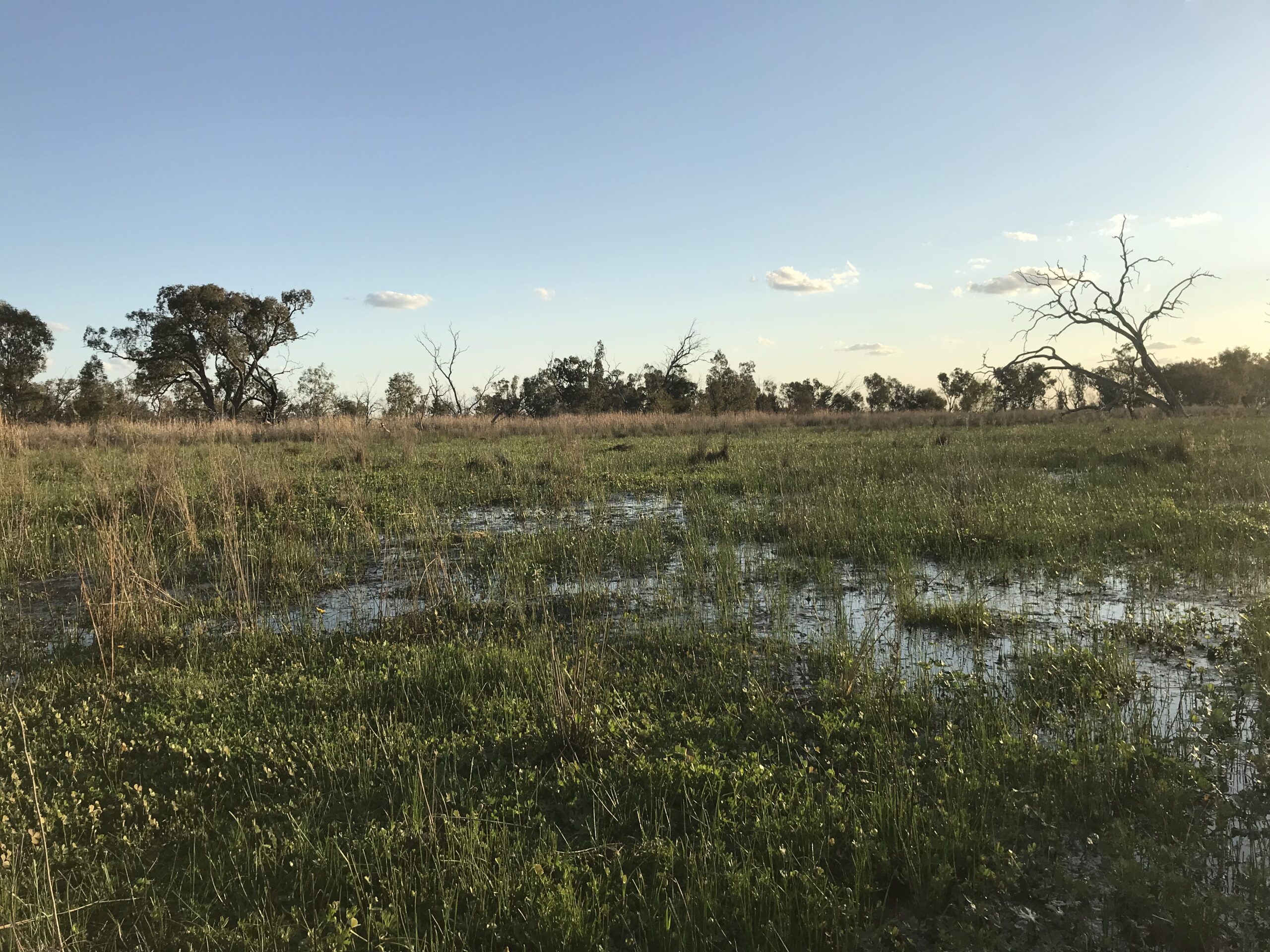Traditional Gamilaaraay Language of the Gomeroi nation used in this article (H. White & B. Duncan – Speaking Our Way, M. Mckemey).
The Commonwealth Environmental Water Holder’s (CEWH) Science Program funds the Flow Monitoring, Evaluation and Research (Flow–MER).
Written by Dr Lindsey Frost.

I recently completed my PhD investigating how warrambool (wetland) food webs respond to environmental watering in the beautiful Guwayda Warrambools (Gwydir Wetlands) and it was an incredible experience. I started my PhD journey in November 2016, which wasn’t the best of times to start a PhD in aquatic ecology seeing as it was the start of an extensive and severe drought across much of eastern Australia. But challenge is opportunity, right? So, while I waited for my study wetland to get wet, I had a lot of time to read and think and I’ve got a cracking literature review! The time finally came, in August 2018, when the Commonwealth Environmental Water Holder, in collaboration with State agencies, delivered an environmental flow into the Ramsar listed Old Dromana wetlands, which forms part of the larger Guwayda Warrambools complex near Moree, NSW.
Upon receiving water for the environment this amazing place boomed into life. I had the privilege of visiting several times to investigate how much energy the warrambool could produce at the base of the food web and to see if and how that energy production and transfer changed in time and space. The warambools stayed inundated until late December/early January 2019 and I witnessed a succession of different waterbirds taking advantage of the feeding and breeding grounds the water created; saw the reeds and grasses and dhulu (trees) come alive; heard yarraya (frogs) calling and saw fat happy dhurru (snakes) enjoying the bounty of the warambools. It was amazing to see the warrambools teeming with life, especially when outside the area, where water couldn’t be provided, the ground was crunchy dry.

Of course, no PhD is complete without adversity, and it took YEARS to sort through samples, conduct analyses, make sense of the data and write up what I learned all whilst working and raising two beautiful young children. I set a goal to complete my studies before my eldest daughter started high school and I submitted only five days after she commenced year 7. Not a bad effort! I could not have made it to the end of this journey without the support of my husband and daughters, and many kind and supportive colleagues and friends. I am so proud to have completed this incredible journey, and grateful for all that I learned and for the experiences I had in the wetlands.
I’m now full time employed on the Flow-MER projects working in the Guwayda (Gwydir) and Warriku-Baaka (Warrego-Darling) Selected Areas and I relish the opportunity to apply my skills and knowledge to inform water management in the Basin. It’s a truly wonderful thing that we as a nation have invested so much into caring for the health of a river at a basin scale and I feel privileged to continue to work in this space.
Want to know what I found out? Keep an eye on upcoming stories to see what it takes to get the biggest bang for your garrangay (duck)!

Managing water for the environment is a collective and collaborative effort, working in partnership with communities, private landholders, scientists and government agencies – these contributions are gratefully acknowledged.
We acknowledge the Traditional Owners of the land on which we live, work and play. We also pay our respects to Elders past, present and emerging.


